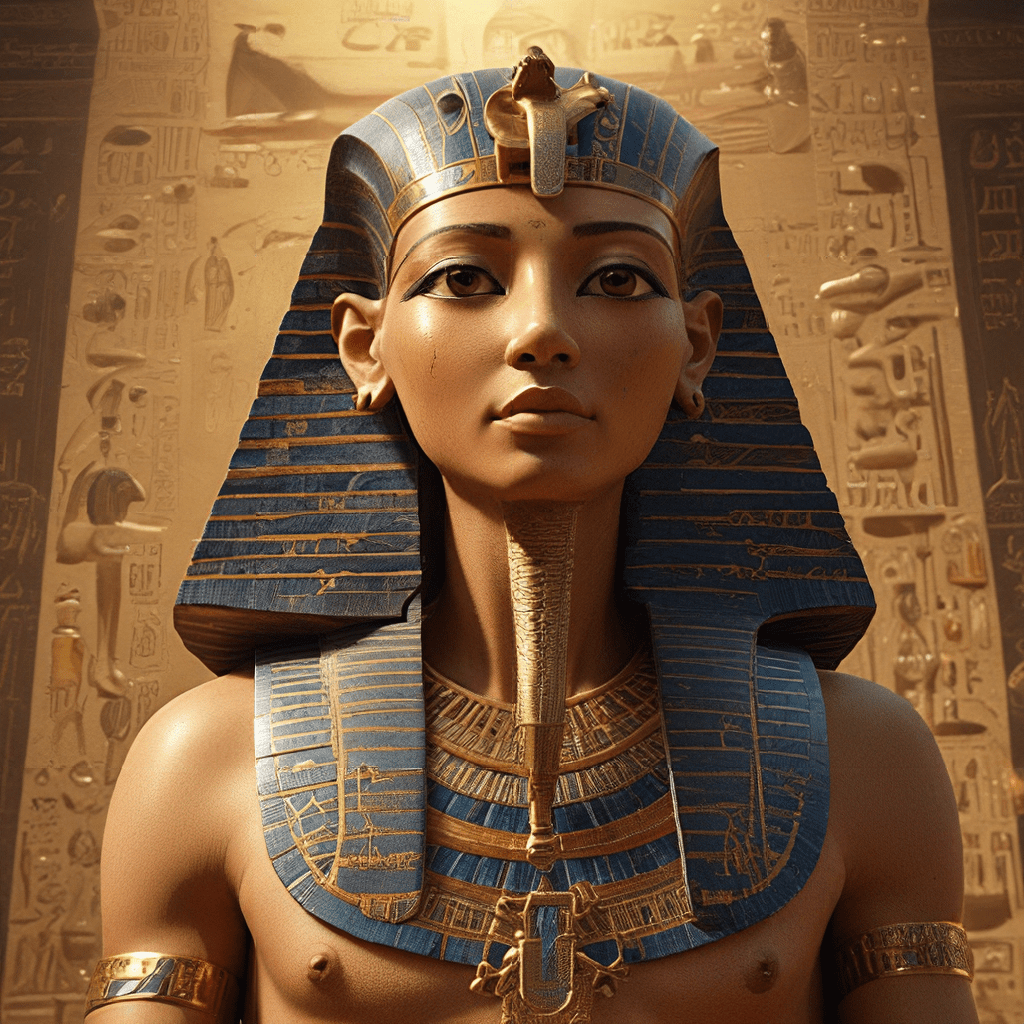1. Ptah: The Architect of the Universe
In ancient Egyptian mythology, Ptah holds a significant position as the creator god, responsible for shaping the universe and bringing all things into existence. His name, “Ptah,” is believed to derive from the Egyptian word for “opening” or “creation,” signifying his role as the ultimate architect.
Ptah’s power is often depicted as the force that gave birth to the world from chaos. He is portrayed as a skilled craftsman, wielding tools and shaping the cosmos with his hands. Ptah embodies the principle of “thought and creation,” demonstrating that the very act of imagining something can lead to its realization.
2. The Ennead: The Cosmic Family
Ptah’s influence extends beyond the act of creation itself. He is a member of the Ennead, a group of nine major gods who represent different aspects of the universe and its creation. In this group, Ptah is often associated with Atum, the self-created god who emerged from the primeval waters of Nun. Together, they represent the foundational principles of creation and order in the Egyptian universe.
The Ennead, through Ptah’s influence, establishes a divine family that governs the cosmos. This family, comprising gods such as Ra, Shu, Tefnut, Geb, Nut, Osiris, Isis, Seth, and Nephthys, reflects the interconnectedness and hierarchical structure of the Egyptian world. Ptah’s role within this group highlights the importance of creation and the power of thought in shaping the universe.
3. The Heart of Re: The Source of Creation
Ptah’s creative power is closely intertwined with the heart of Ra, the sun god, who is considered the source of life and light. This heart, known as “The Heart of Re,” symbolizes the divine will and intelligence that drives creation. Ptah, through his power of thought and creation, embodies this will, giving form to the divine plan of Ra.
Ptah’s role in this relation highlights the interplay between creative force and divine intention. The world is not simply born out of chaos, but rather emerges from a well-defined plan orchestrated by the gods, with Ptah as the divine architect.
4. Ptah’s Creative Power: The Word and the Thought
Ptah’s ability to create through thought is often described as the power of the “word.” In ancient Egypt, the spoken word was believed to hold immense power, capable of shaping reality. Ptah’s creation through his thoughts is similar to this concept, implying that his intention and will are manifested through the power of the spoken word.
This concept of “word-power” is reflected in Ptah’s iconic representation of the “Ben-ben,” a primordial mound from which the universe emerged. This mound is often depicted as a pyramid, symbolizing Ptah’s creative power and its ability to shape the world.
5. The Role of Ma’at: Order and Harmony in Creation
Ptah’s creation isn’t solely about bringing things into existence but also about establishing order and harmony. This is embodied in the concept of Ma’at, the goddess of truth, justice, and cosmic order. Ma’at represents the balance and harmony that sustains the universe, ensuring its proper functioning.
Ptah’s role in establishing Ma’at highlights that creation is not just about bringing things into being but also about ensuring their proper interaction and balance. It emphasizes the importance of order and harmony in the divine plan for the universe.
6. Ptah’s Role in the Underworld: Connecting the Realms
Ptah’s influence extends beyond the realm of the living. He also plays a crucial role in the afterlife, connecting the world of the living with the underworld. As the god of craftsmen, Ptah is believed to shape the bodies of the deceased in preparation for their journey into the realm of the dead.
In the underworld, Ptah is associated with Osiris, the god of the dead and the afterlife. This association highlights the cyclical nature of creation and transformation, as Ptah’s power extends beyond the initial act of creation, shaping and guiding individuals throughout their journey.
7. Ptah’s Influence on Egyptian Art and Architecture
Ptah’s impact can be observed in the art and architecture of ancient Egypt. As the god of craftsmen, he is often depicted in the form of a seated figure, holding a chisel and mallet. This representation reinforces his role as the builder and shaper of the universe.
The pyramids, the iconic structures of ancient Egypt, are often seen as symbolic representations of Ptah’s creative power. These monumental structures reflect the Egyptians’ belief in Ptah’s ability to shape the earth and create enduring structures.
8. Ptah in Popular Culture: The God of Craftsmanship
Ptah’s influence extends even into modern culture. His association with craftsmanship and creation has led to his popularity as a patron god for artisans and skilled workers. Today, Ptah is still revered as the god of craftsmanship and is often invoked by artists and craftspeople seeking inspiration and success.
His image is often used in artistic representations of the creative process, highlighting his role as the divine guide for those who seek to create and shape the world around them.
9. The Legacy of Ptah: The Enduring Power of Creation
Ptah’s legacy endures not only in the art and culture of ancient Egypt but also in the enduring human fascination with creation. His story reminds us of the power of thought, imagination, and craftsmanship in shaping the world around us.
His example serves as a powerful reminder that the universe itself is a testament to the power of creative will and the interconnectedness of all things.
10. Ptah and the Modern World: Understanding the Power of Thought
In the modern world, Ptah’s story offers valuable lessons about the power of thought and its influence on reality. His ability to create through thought challenges us to consider the role of our own thoughts and intentions in shaping our lives and the world around us.
Ptah’s story emphasizes the importance of harnessing the power of our minds to create, build, and innovate, reminding us that our thoughts can indeed be powerful forces for change.




